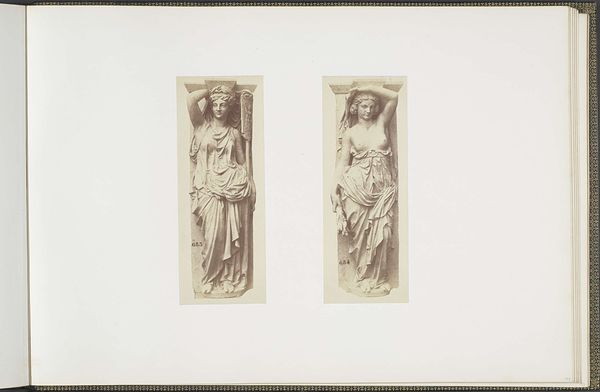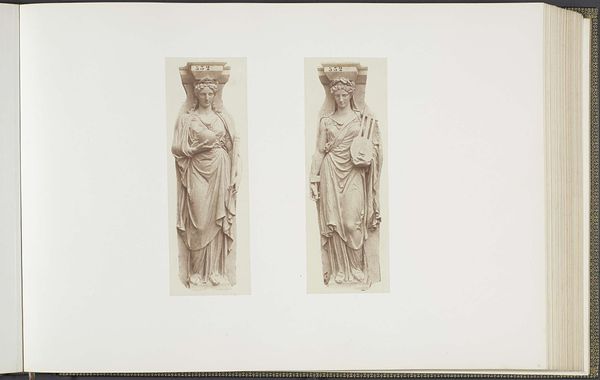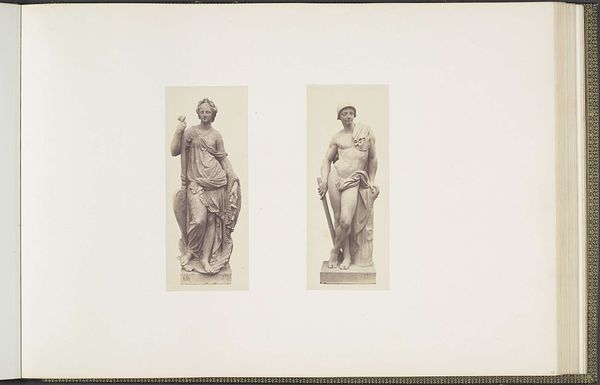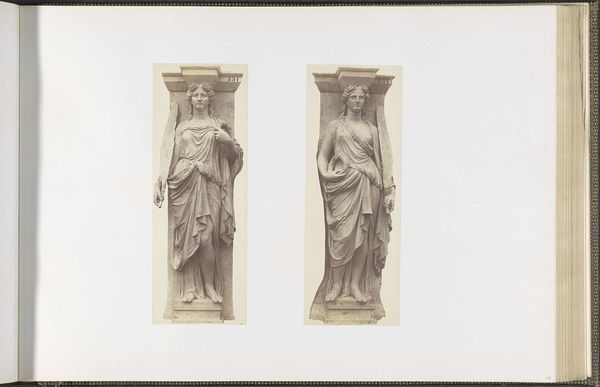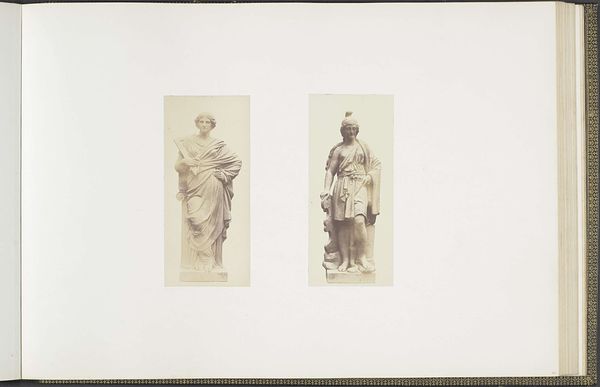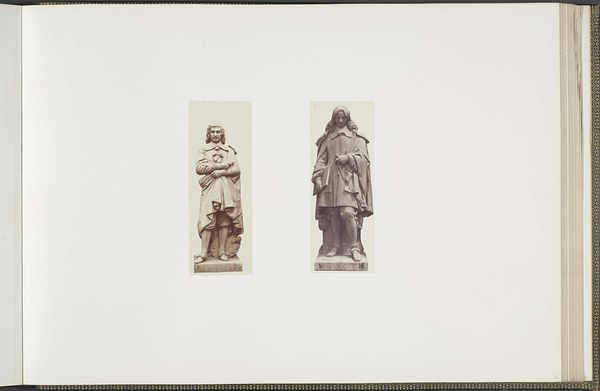
Gipsmodellen voor kariatiden op het Palais du Louvre door Eugène Louis Lequesne c. 1855 - 1857
0:00
0:00
photography, sculpture, albumen-print
#
neoclacissism
#
landscape
#
figuration
#
photography
#
ancient-mediterranean
#
sculpture
#
albumen-print
Dimensions: height 382 mm, width 560 mm
Copyright: Rijks Museum: Open Domain
Edouard Baldus captured these plaster models for caryatids at the Palais du Louvre in a photograph of unknown date. Baldus was a key figure in documenting France's architectural heritage, often under state commission. The caryatids themselves, designed by Eugène Louis Lequesne, are neoclassical figures, evoking ancient Greece. But let's consider how gender and power intersect here. These female figures literally support the architecture of the Louvre, embodying the weight of tradition and authority. The male gaze is subtly at play, both in the sculpture and Baldus’s photograph, which can raise questions about women's roles in art and society. Does this image reinforce the conventional image of women as bearers, or does it, perhaps unintentionally, offer a perspective on female strength and resilience? What does it mean to visualize women as structural and decorative elements? Think about the weight these figures carry and the stories they silently tell.
Comments
No comments
Be the first to comment and join the conversation on the ultimate creative platform.
